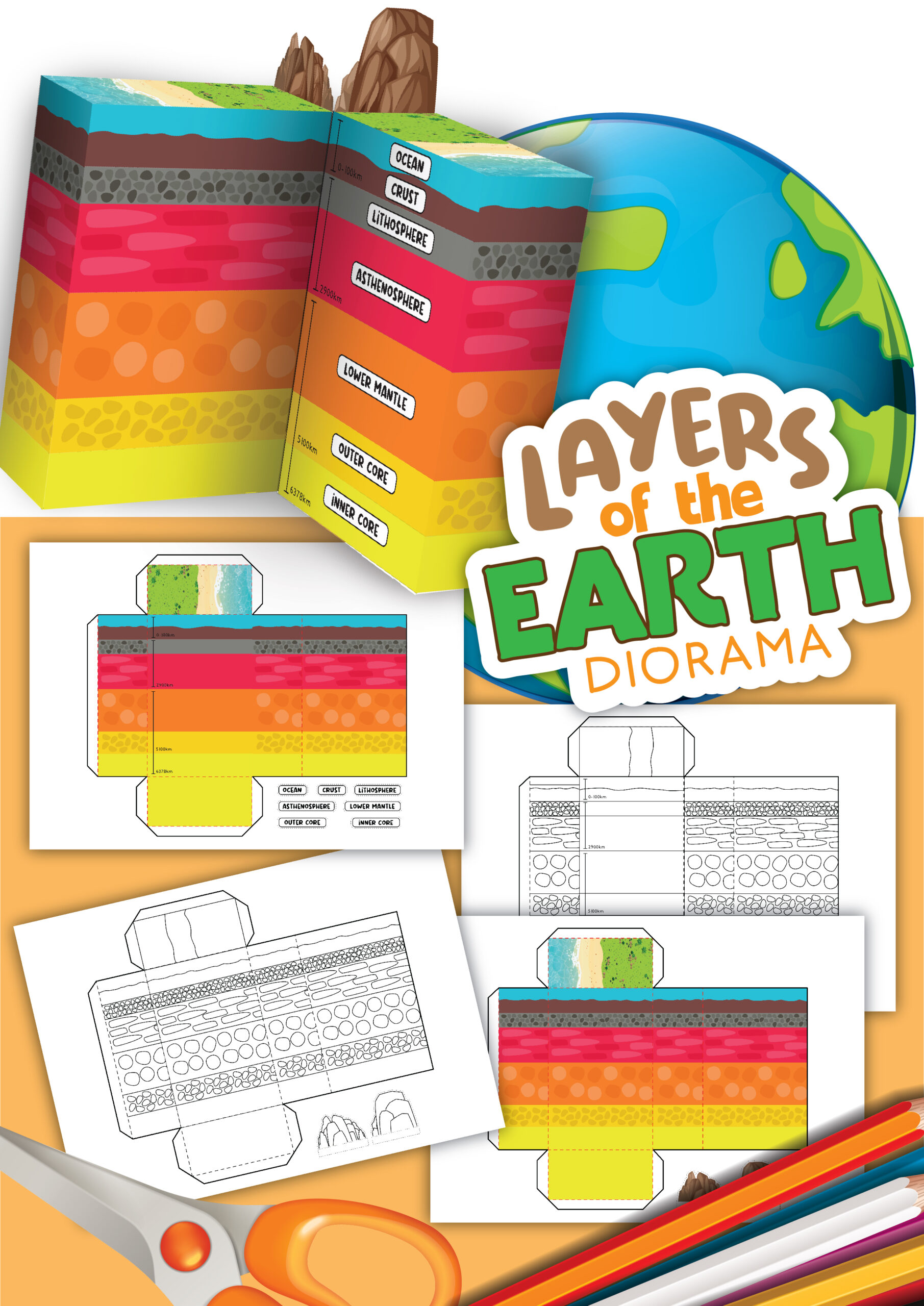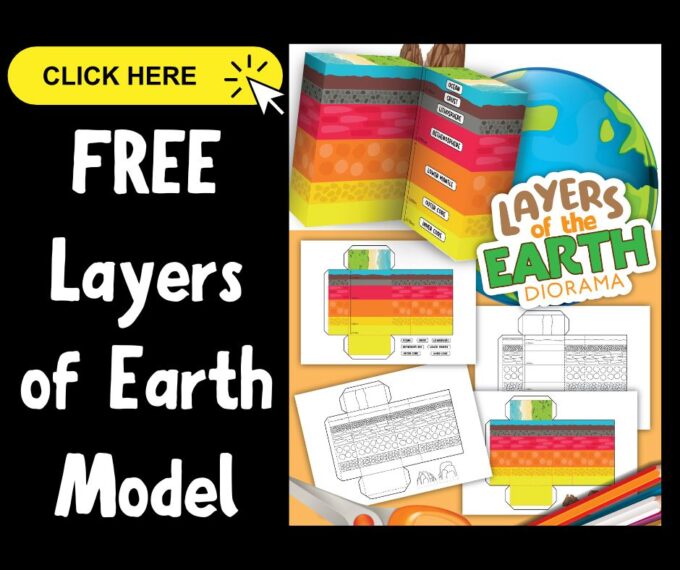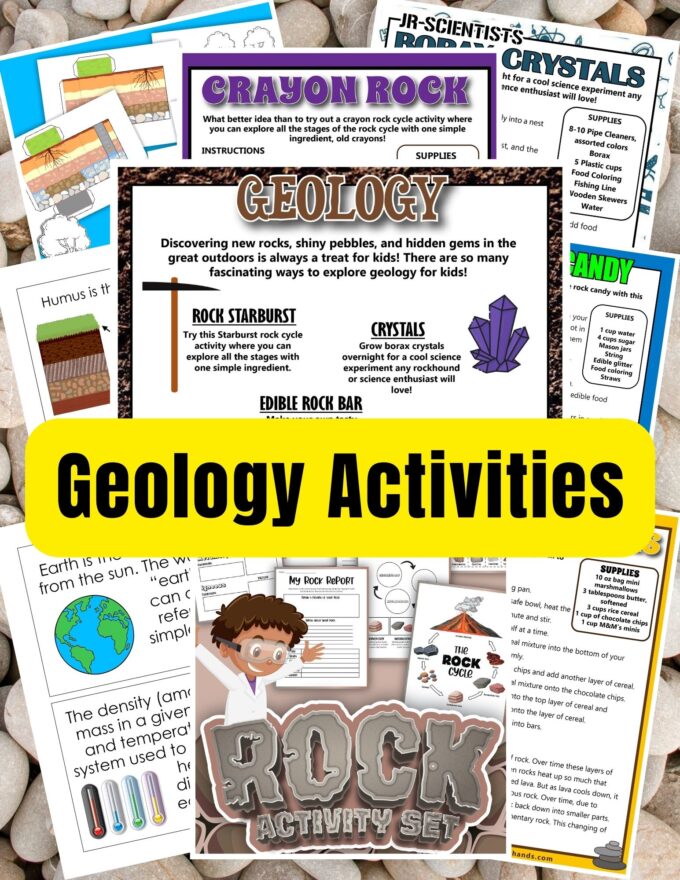With our Earth Layers Model, embark on a journey to the core of our planet! Delve deep into the fascinating realms beneath our feet as we unveil the Earth’s layers. From the solid crust to the fiery mantle and core, join us as we explore the mysteries and marvels of Earth’s inner workings with a free printable papercraft. Find more hands-on ways to explore Earth Science below.
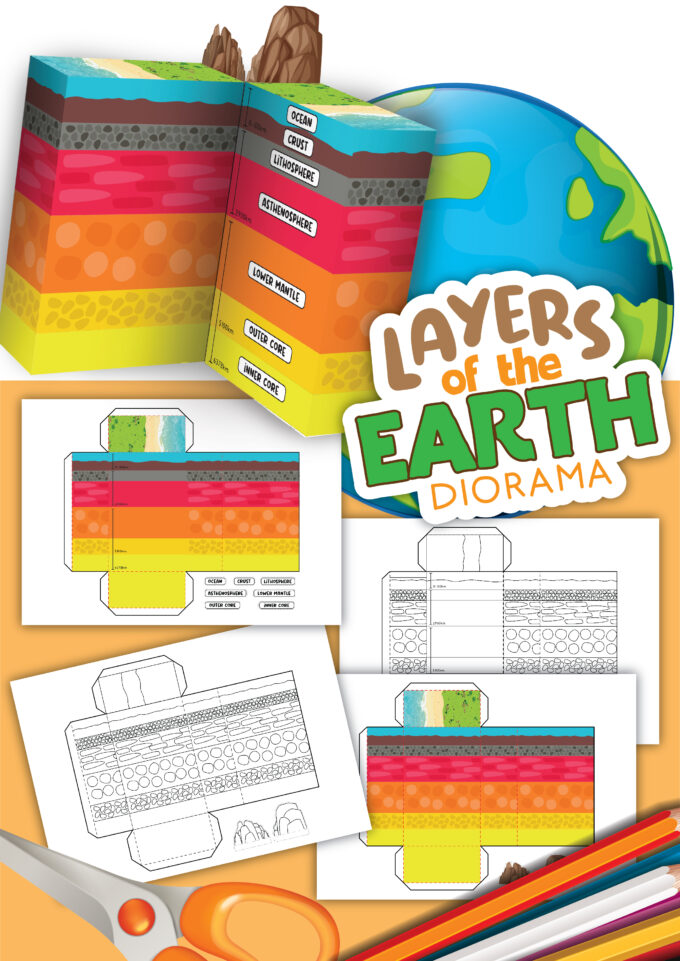
Earth Science for Kids
Studying Earth’s layers in elementary grades provides an understanding of our planet’s structure and composition. It introduces kids to the idea that the Earth is made of different materials arranged in distinct layers.
Additionally, exploring Earth’s layers lays the groundwork for understanding geological phenomena such as earthquakes, volcanoes, and mountain formation as students progress in their scientific education.
Check out more Earth Science Activities here.
How to Make Earth Layers Model
Note: This printable earth layers model offers a black and white and color version for your convenience!
Also included are labels that can be fixed to the different layers of the Earth.
Supplies:
- Paper Printable
- Coloring tools
- Scissors
- Tape or Glue Stick
Instructions:
STEP 1: Color the 2 black and white printables. You can use the color version as a model.
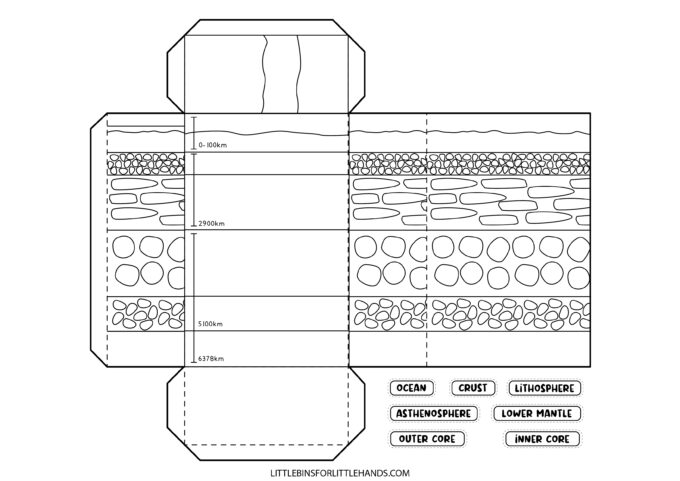
STEP 2: Cut out the pieces.
STEP 3: Fold and glue/tape the two sections together using the tabs.
STEP 4: Tape or glue on the mountains.
STEP 5: Add the labels!
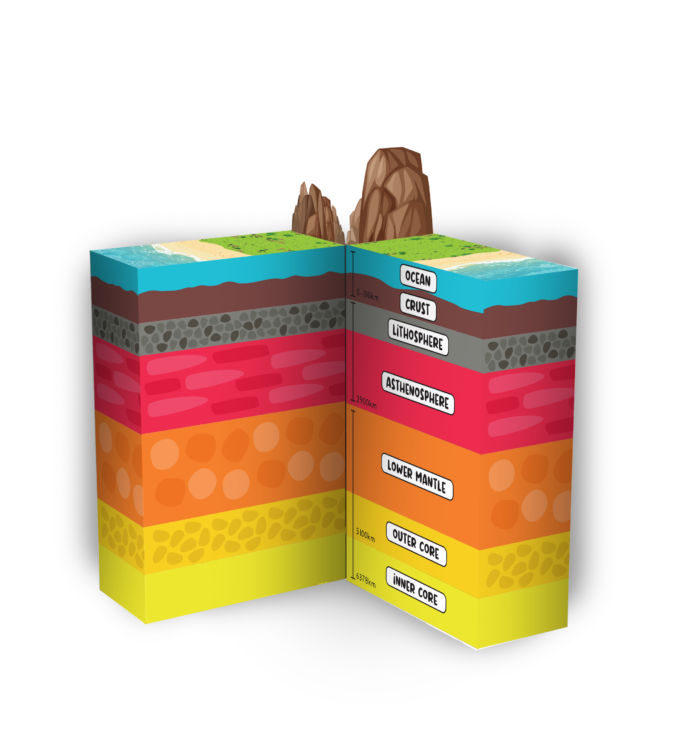
Free Printable Earth Layers Model
Grab the free printable earth layers model templates here.
What are the Earth Layers?
The Earth is composed of several distinct layers, each with its own unique properties and characteristics. These layers work together, influencing geological processes, magnetic phenomena, and the overall structure of our planet. Here’s a brief overview:
CRUST
Crust: The Earth’s outermost crust layer is relatively thin compared to the other layers. It’s composed primarily of solid rock and is divided into two types: the continental crust, which forms the continents and is thicker but less dense, and the oceanic crust, which underlies the ocean basins and is thinner but denser. The crust is where we find mountains, valleys, and other surface features and landforms.
MANTLE
Mantle: Beneath the crust lies the mantle, a thick layer of hot, semi-solid rock that extends about 1,800 miles (2,900 kilometers) below the Earth’s surface. It’s divided into the upper mantle, which is more rigid, and the lower mantle, which is hotter and flows more easily. The mantle is responsible for the movements of the Earth’s tectonic plates and plays a crucial role in the planet’s heat distribution. Let’s break it down a bit further:
- Lithosphere (Upper Mantle): The lithosphere is the rigid outermost layer of the Earth, consisting of the crust and the uppermost portion of the mantle. It is relatively cool and brittle compared to the underlying asthenosphere. The lithosphere is divided into tectonic plates that float on the semi-fluid asthenosphere. These plates are in constant motion, interacting at their boundaries, leading to phenomena such as earthquakes, volcanic activity, and the formation of mountain ranges.
- Asthenosphere (Mid-Mantle): Beneath the lithosphere lies the asthenosphere, a semi-fluid layer of the upper mantle. The asthenosphere is hotter than the lithosphere. The movement of the asthenosphere allows the tectonic plates of the lithosphere above it to move, driving processes like plate tectonics and the formation of geological features on the Earth’s surface.
OUTER CORE
Outer Core: The solid inner core is surrounded by the outer core, a molten iron and nickel layer. The outer core is about 1,400 miles (2,300 kilometers) thick and generates the Earth’s magnetic field by moving its metallic fluids. Due to the high temperatures and pressures found at this depth, this layer is liquid.
INNER CORE
Inner Core: At the center of the Earth lies the inner core, a solid sphere composed primarily of iron and nickel. Despite extreme temperatures reaching up to 9,000 degrees Fahrenheit (5,000 degrees Celsius), the inner core remains solid due to the immense pressure exerted by the layers above it. The inner core’s solid nature and rotation are crucial in generating the Earth’s magnetic field.
Earth Science Topics
What do you learn in earth science? Earth Science topics include the 4 main branches of Earth Science.
- Geology – the study of rocks and land.
- Oceanography – the study of oceans.
- Meteorology – the study of weather.
- Astronomy – the study of stars, planets, and space.
More Earth Layers Projects for Kids
Find more ways to explore our planet Earth!
- Layers of Earth STEAM Project
- LEGO Earth Layers
- LEGO Soil Layers
- Edible Soil Erosion
- Soil Layers Model
- Edible Tectonic Plates
- How are Rocks Formed?
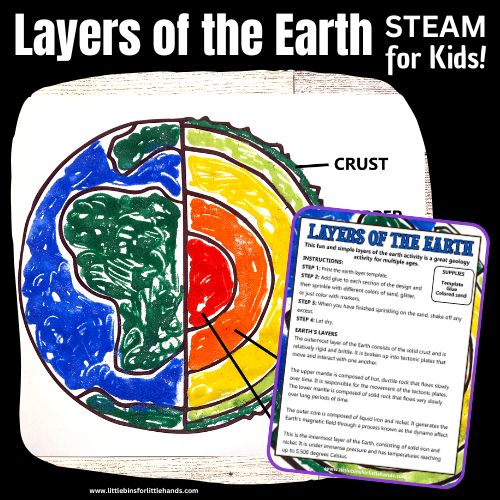


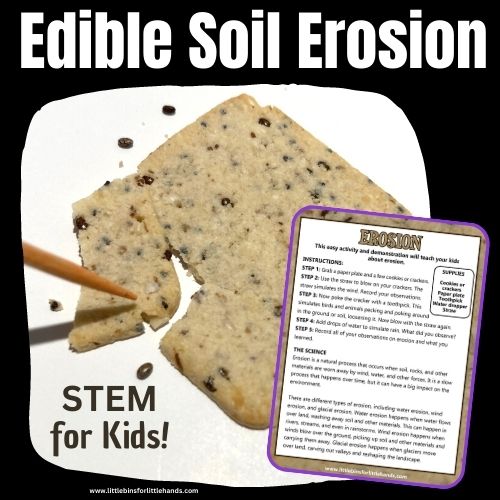
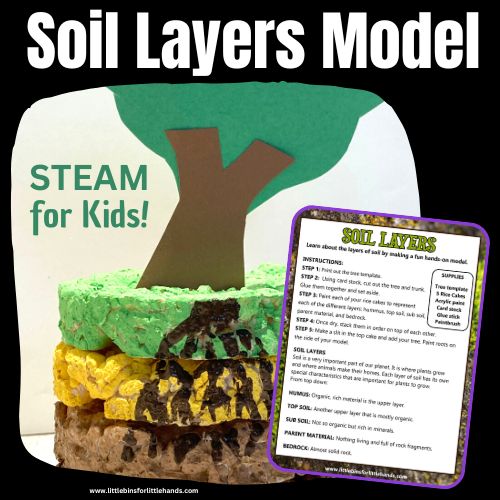
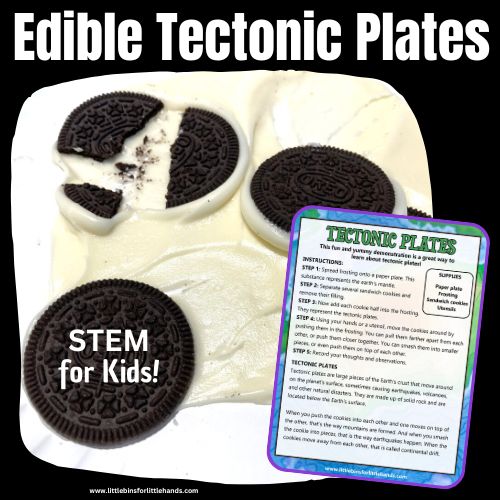
Printable Geology Pack
Kids love rocks, and this 100+ page Geology Pack is a fantastic way to encourage their passion for exploring, learning, and collecting!
WHAT’S INCLUDED:
- 8+ Hands-On Learning Activities exploring crystals, rocks, and volcanos
- Additional mini-packs include materials to learn about soil layers, layers of the earth, and the rock cycle!
- Extras include vocabulary words, fun games, and projects.
- Be a Collector Pack: start a rock collection like a geologist
- 3 Dioramas: Build 3 models including rock cycle, soil layers, and layers of the earth


